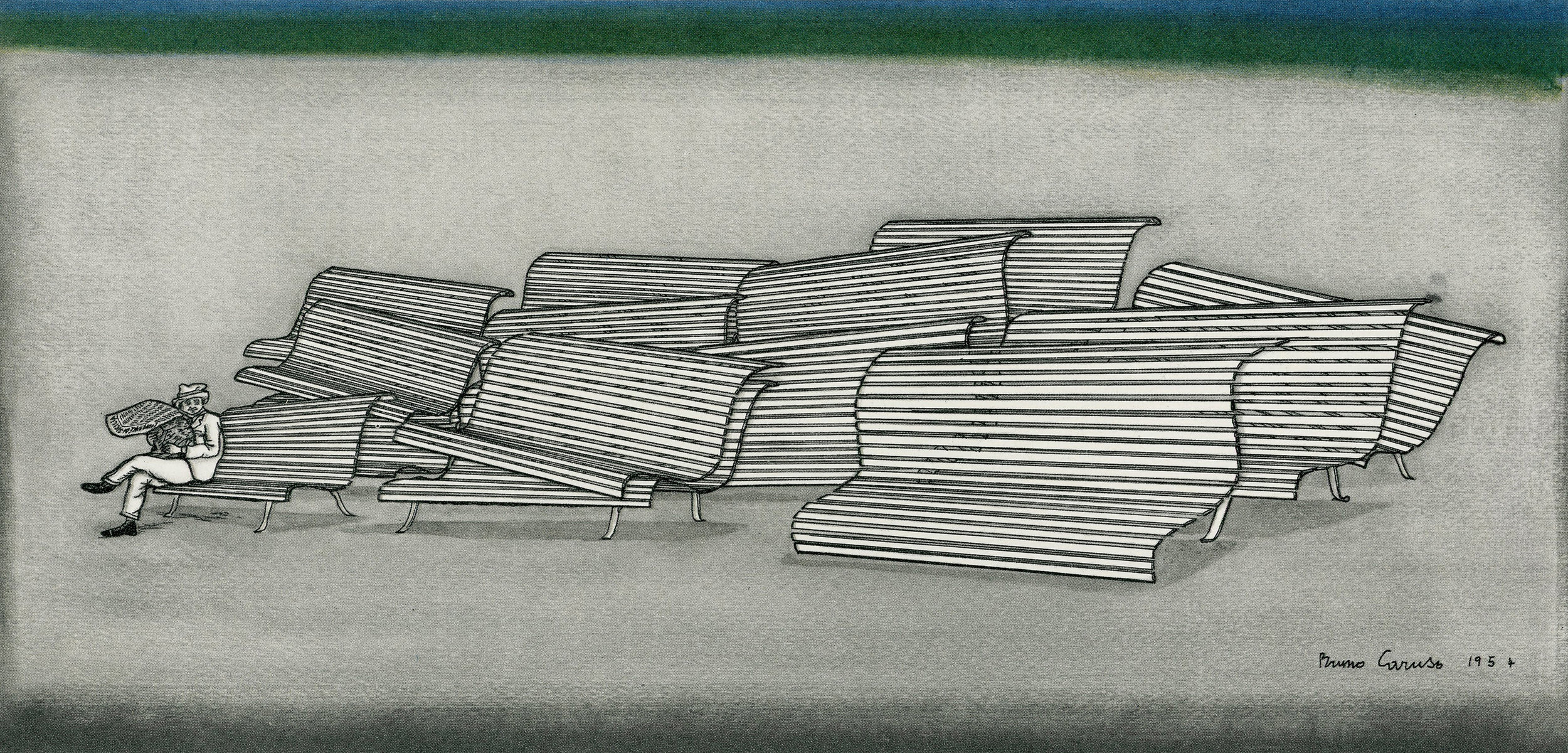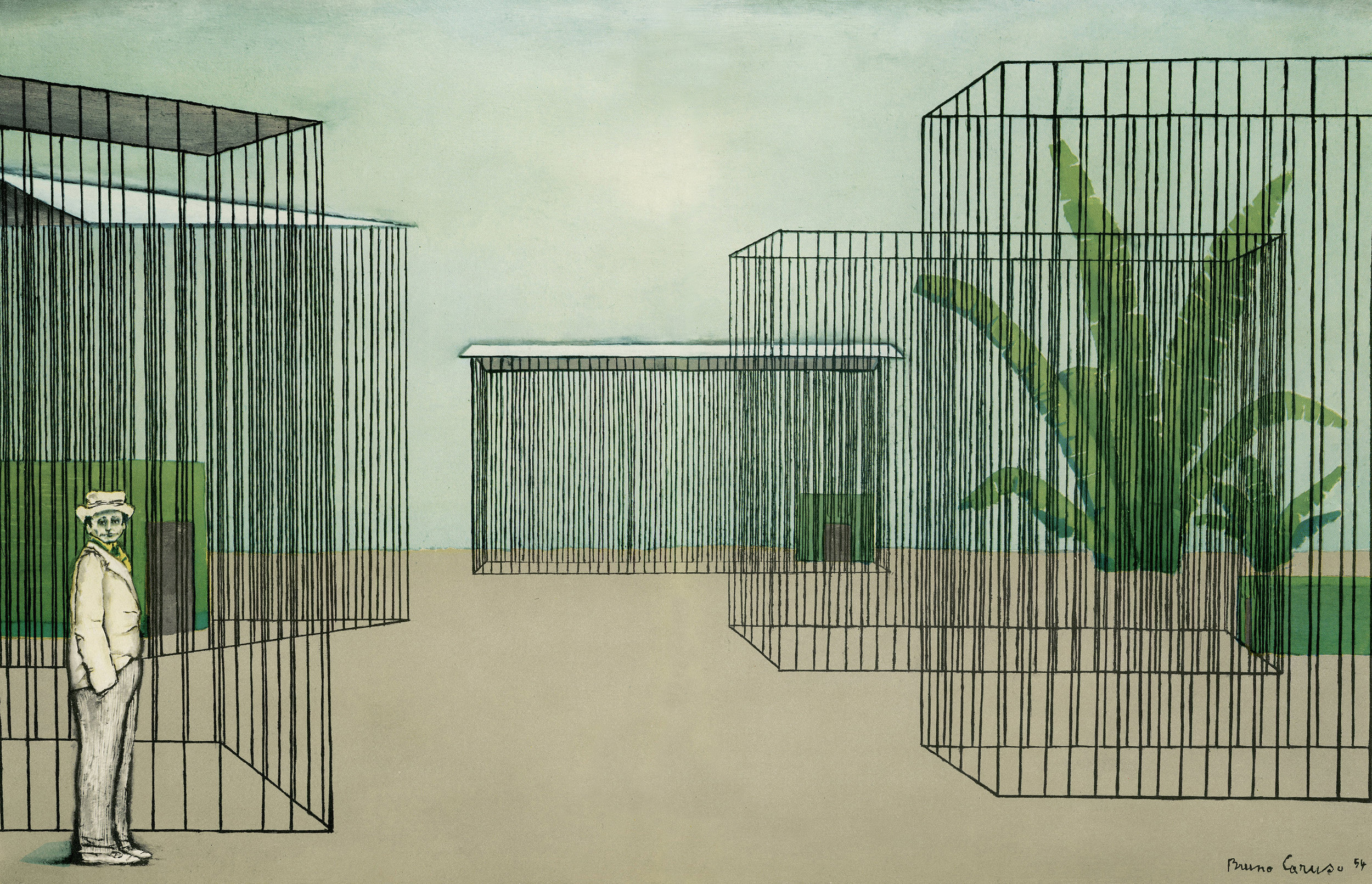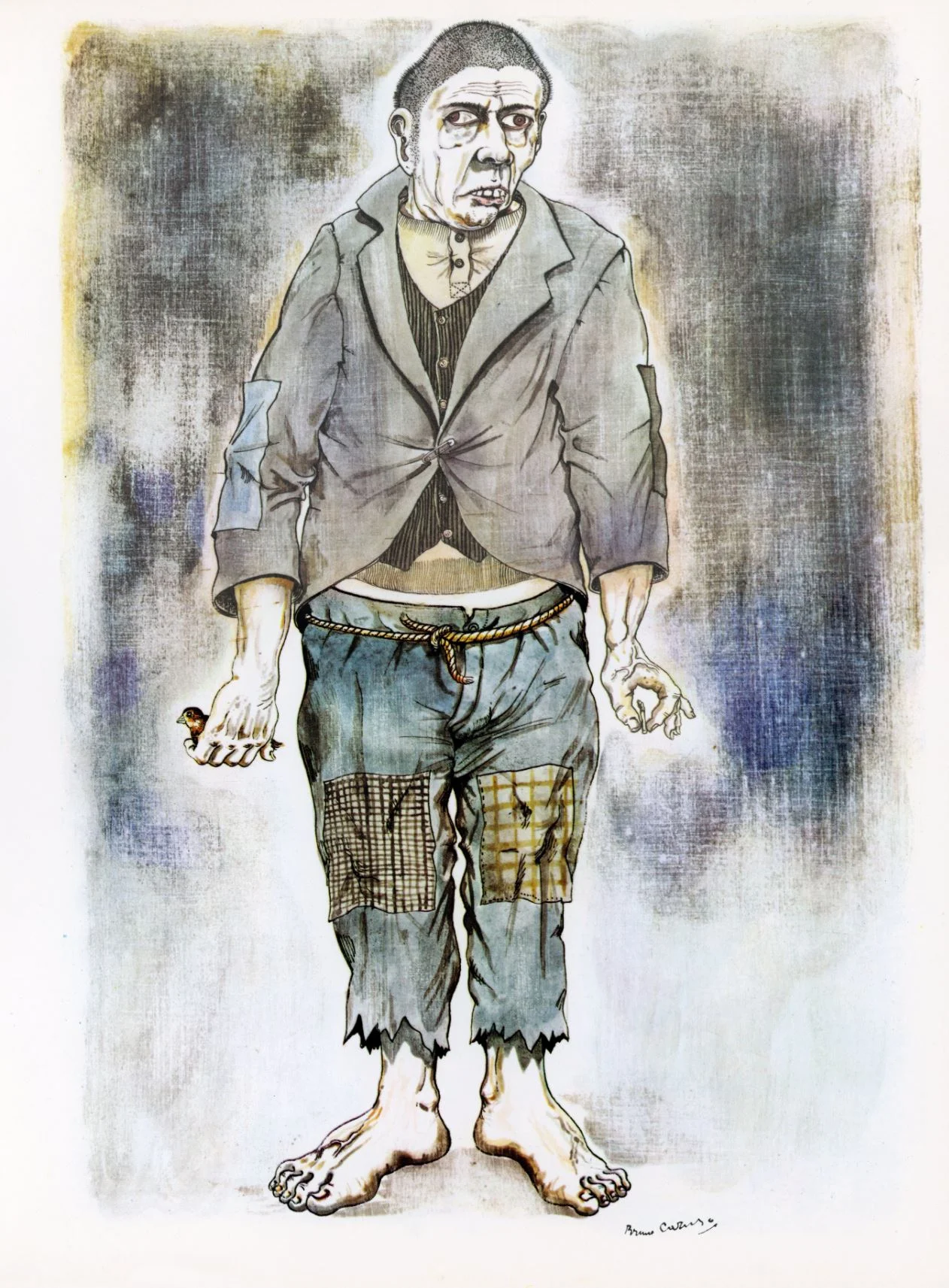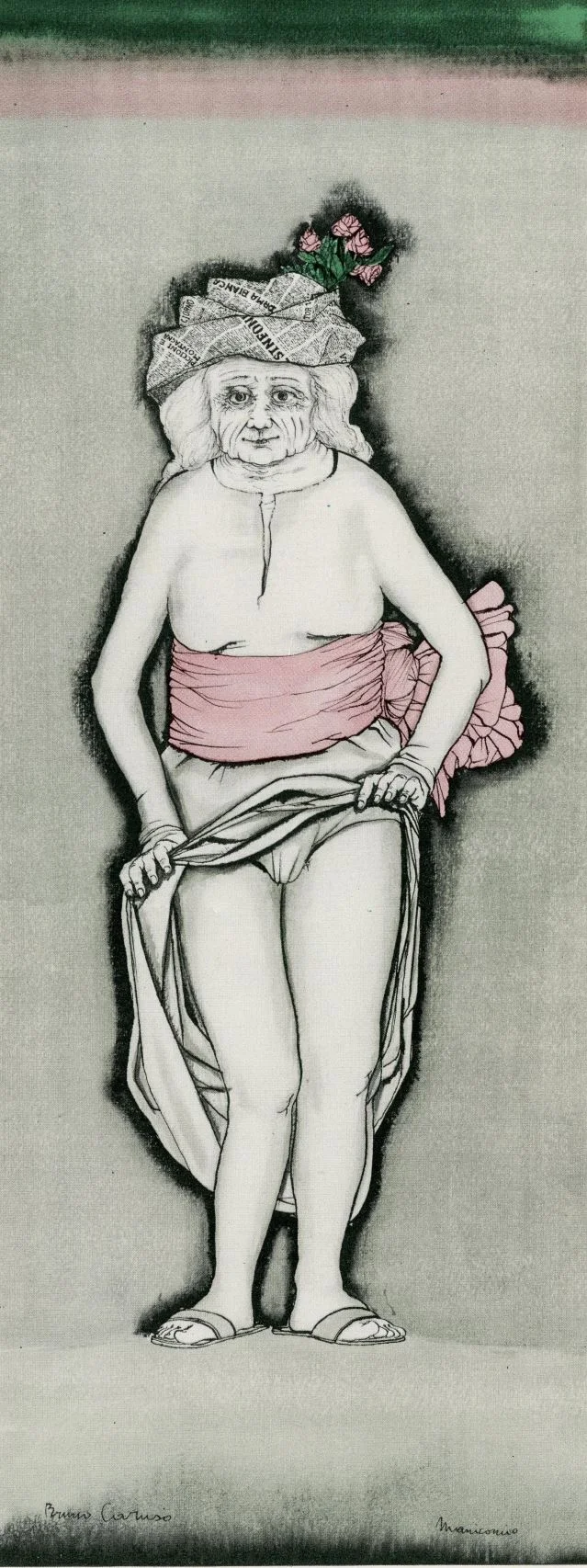Below is a selection of Caruso’s most important drawings and paintings; from the stark neorealism of post-war Palermo, to the the rise of the Mafia, the horrors of the Sicily’s psychiatric wards, the hypocrisy of global political systems, and his own reflections on the mythology of Modern Art.
Click on the thumbnails below to explore a specific period, or keep scrolling down the page to see the whole selection. There are 30 pictures in each section.
Featured



























































































































































































































































